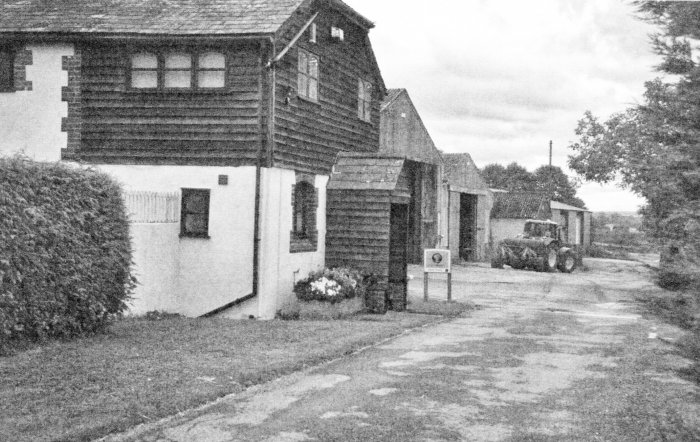Beyond the City Boundary - TrustNews Sept 15
In the second of his reminiscences of old Winchester Phil Yates explores an area now much in the news, Barton Farm.
Mention Barton Farm and our thoughts immediately focus on the planned housing development. But 80 years ago the area beyond Park Road was considered to be ‘in the country’.
As young lads cycling along Andover Road we aimed at the brow of the hill before turning off on a public footpath running eastwards to the railway line. There we would climb over the stile, cross over the line (before electrification of course) and watch the trains go by. We knew from the timetable the spaces between trains passing, which allowed us time to place coins on the line and bet on whose coins got flattened the most.
To rekindle old memories I walked along the same route with Rod Youngman, on a hot June day this year. We reached the railway line but were of course prevented from venturing across. Retracing our tracks along the footpath we were able to locate the row of copper beech trees planted by the Skinners in 1981 (see TrustNews March 2015). The trees were easy to find, but we had difficulty in slipping through the gap in the hedge to see the modest memorial stone, now overgrown with moss and weeds. Walking down a wide chalk track we arrived at Barton Farm cottages and outbuildings housing a number of double-decker buses. The first building, originally a dairy, has now been tastefully converted into offices occupied by NFU Mutual. Adjoining are Barton Cottages - ‘Hall & Burge Barton Farm’. l understand that neither the cottages nor the NFU office are included in the development and will thankfully remain.
Walking back along Andover Road, by the City of Winchester boundary sign, we discovered, buried in the long grass, the original sign or milestone engraved ‘1 mile to the Buttercross’.
The Hall family farmed in the Barton Farm area for many years. Talking to Charles Hall, he told me ‘ My uncle, Walter Hall, rented farmland from William Barrow-Simonds and in fact a strong relationship existed between landlord and tenant for over 100 years... Walter died in 1966 when his widow took on the tenancy and Joe Burge managed the farm for her.’ Burge married the Hall’s daughter, Mary and their son, Mike, took over in 1984, keeping alive the long family connection.
There are not many sites in Winchester where an archaeological dig does not take priority over the start of building works and Barton Farm is no exception. The developers, City of Aberdeen Land Association (Gala Homes), have been working with a team from Pre-Construct Archaeology Ltd for several months in the Wellhouse Lane area where the first phase of the development is planned. According to PCA’s Project Manager, Paul McCulloch, ‘the earliest discovery on the site is of a human burial dating back to the early Bronze Age, known as a beaker burial. Evidence has also been found of a round-house from the Iron Age and Roman pottery is there as well. The archaeological investigation has demonstrated just how long people have been using parts of Barton Farm to bury their dead and as a place of settlement. The remains of two 18th century military camps have also been unearthed in this area, dating to 1756 and 1761 .'
Thee development due to be carried out over the next few years stretches from Wellhouse Lane opposite Harestock Road to the back garden boundaries of Park Road properties, where the controversial distributor road will emerge back into Andover Road, having left it at Wellhouse Lane. Since the formation of the Save Barton Farm Group in 1998, planning applications have been refused and appeals rejected, yet Cala Homes finally won their legal challenge. The present development includes 2000 homes and a primary school. In 2004 it was designated a ‘Major Development Area’. The Trust has objected to the development but are now engaged (acting with WinACC) in consulting with Cala’s architects to try to achieve the best possible results having had to accept that the development is a fait accompli. Unfortunately government policy towards the housing shortage dictates and the beautiful English landscape is being swallowed up. No doubt, 50 years hence, people will say ‘what was all the fuss about?’

My thanks to the following for assisting me with this article: Mike Burge, Michael Carden, Charles & Barbara Hall, Robert Howland (Chairman, Save Barton Farm Group), Paul McCulloch (PCA Project Manager), Chris Slattery, and last, but not least, Rod Youngman (Railway and busenthusiast).
